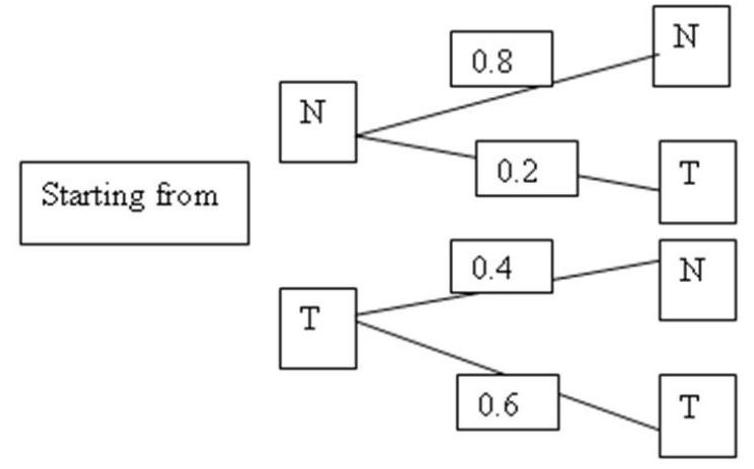Multiple Choice
Newsweek and Time are two competing weeklies, each of which tries to keep their readership while trying to get the other's readers to switch. Among all the households holding yearly subscription to Newsweek or Time but not both, let and denote the states that a household is a current Newsweek or Time subscriber, respectively. The probabilities of switching from one state to the other after one transition (when they renew) are given by the tree diagram. (For simplicity, it may be assumed that all annual subscriptions expire on December 31st of the year and are renewed by all of them for one or the other but not both magazines for one year.) If the current number of households subscribing for Newsweek and Time is respectively 2000 and 4000, what would be the number of subscribers to Newsweek in the steady state, that is after very many renewals?
A) 2000
B) 4000
C) 3300
D) 4400
Correct Answer:

Verified
Correct Answer:
Verified
Q41: A transient state in a Markov chain
Q42: Judy Jones purchases groceries and pop
Q43: Judy Jones purchases groceries and pop exactly
Q44: XYZ Inc. hires only retired people for
Q45: Markov systems typically exist for one or
Q47: Judy Jones purchases groceries and pop
Q48: If matrix <span class="ql-formula" data-value="\mathrm{A}"><span
Q49: Markov Analysis has many business applications, such
Q50: The rows of a transition probability matrix
Q51: Short term behavior of a Markov system